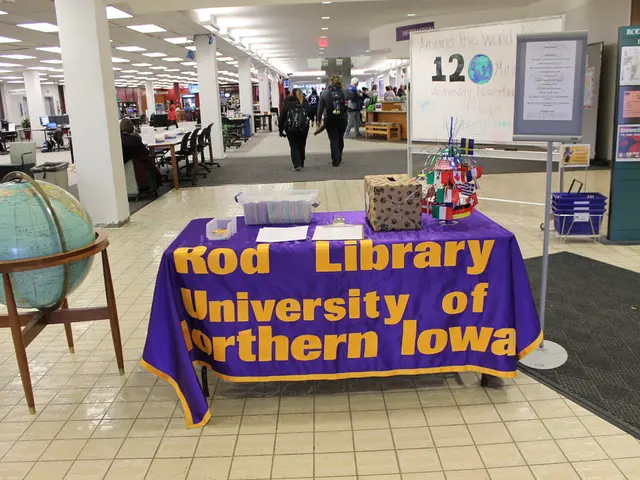Exploring Media Sensitivity and Cultural Awareness in the Framework of Laws and Regulations
In an increasingly connected world, the role of media in fostering cultural sensitivity and understanding has never been more crucial. The integration of diverse voices, advancements in technology, the growing influence of social media, and educational initiatives focusing on media literacy are shaping future trends in media and cultural sensitivity.
This shift towards a more nuanced understanding of cultural expressions is essential in promoting social harmony and understanding among various communities. Media plays a pivotal role in shaping public perceptions and cultural norms, and adhering to legal frameworks and ethical practices is essential for creators to mitigate misrepresentation and promote understanding.
Cultural responses to media representation encompass a wide spectrum of reactions from various communities regarding how their identities and narratives are portrayed. Ranging from praise to protest or calls for change, these reactions depend on the accuracy and respectfulness of the representations. In an era where global communication is instantaneous, the responsibility of media professionals to uphold cultural sensitivity is paramount, ensuring that media serves as a bridge for dialogue rather than a barrier that perpetuates misunderstanding or division among cultures.
To ensure cultural sensitivity in content creation and dissemination, media professionals must prioritize education, collaboration with cultural insiders, careful content testing, respectful communication styles, policy enforcement, and ongoing cultural engagement. Key strategies include conducting thorough cultural research, using culturally relevant and appropriate imagery, language, and examples, adapting communication style to cultural differences, avoiding cultural misrepresentation and appropriation, ensuring transparency and accuracy, engaging in continuous cultural immersion and social listening, and promoting diversity and inclusion within content creation teams and technologies.
The civil rights movements of the 1960s and 1970s marked a pivotal shift, highlighting the need for responsible media portrayals. The evolution of media and cultural sensitivity can be traced throughout history, with early 20th century representations often being simplistic and racially charged, reflecting societal prejudices.
The rise of the internet and social media has further transformed the landscape of media and cultural sensitivity, giving audiences greater power to challenge and critique media content. Key regulations governing media and cultural sensitivity address issues of bias, discrimination, and conflict within media narratives, leading to a more nuanced understanding of how media can impact cultural dynamics.
Understanding audience dynamics is critical for media professionals aiming to foster a culturally aware environment. Public perception can vary widely and is influenced by factors such as personal experiences, societal norms, and current events. The legal framework surrounding media and cultural sensitivity encompasses various laws aimed at promoting respectful representation and communication across cultures, including Title VI of the Civil Rights Act, Communications Act, and anti-defamation laws.
In summary, media professionals should prioritize education, collaboration with cultural insiders, careful content testing, respectful communication styles, policy enforcement, and ongoing cultural engagement to produce culturally sensitive and impactful content in today’s global media landscape. The influence of social media on sensitivity dialogues, the importance of cultural sensitivity in media, and the civil rights movements of the past all underscore the vital role media plays in promoting cultural sensitivity, challenging stereotypes, and fostering an environment of understanding and respect among different communities.
- The integration of intellectual property rights and media literacy education is shaping future trends in fostering cultural sensitivity.
- In the fashion-and-beauty industry, cultural sensitivity is crucial for ensuring accurate representation and securing loyal customers.
- Food-and-drink blogs must be mindful of cultural practices and tastes when sharing recipes and culinary traditions.
- Home-and-garden magazines should work towards reflecting diverse lifestyles and design preferences of various communities.
- Ensuring cultural sensitivity in relationships discourse involves respecting different perspectives and fostering an inclusive conversation.
- Pet owners seek out educational resources that cater to their pets' breed-specific needs and cultural backgrounds.
- Travel guides and blogs must be woke to local customs and traditions to provide authentic travel experiences for readers.
- Automotive enthusiasts follow media influencers who showcase car culture from diverse locations and demographics.
- Bookworms praise authors addressing cultural themes and issues in their literary works.
- Educational institutions focus on teaching media literacy and critical thinking skills to develop well-informed and culturally sensitive individuals.
- Personal-growth and self-development media should embrace diversity and promote understanding of various worldviews.
- Social media platforms have a responsibility to regulate hate speech, bias, and bullying to create a safer and more inclusive environment.
- Movies-and-TV shows that sensitively tackle cultural issues are revered by audiences, driving discussions and awareness.
- Career-development resources must cater to the needs and aspirations of professionals from various cultural backgrounds.
- Entertainment news outlets should cover a diverse range of celebrities and cultural events to maintain the attention of a global audience.
- Job-search platforms must cater to the needs of multicultural job seekers and understand the different requirements of various industries.
- Pop-culture is a platform where diverse movements, such as black lives matter and #metoo, gain mainstream traction.
- Sci-fi-and-fantasy media has the power to bridge cultural gaps by exploring unusual worlds and promoting empathy.
- General-news sources strive to cover stories from an unbiased, culturally sensitive perspective, focusing on balance and inclusivity.
- Failing to address crime-and-justice issues sensitively contributes to public bias and misunderstanding of specific cultural groups.
- Understanding cultural norms and learning is essential for effective communication and conflict resolution in the realm of relationships.
- Skills-training programs must emphasize cultural competency to help professionals navigate diverse workplaces.
- Sports media must represent diversity and fairness to ensure that everyone, regardless of ethnicity or gender, feels included.
- In football, the NFL, WNBA, MLB, NHL, NBA, racing, American football, soccer, golf, tennis, and mixed martial arts, cultural sensitivity promotes equal representation and opportunity.





